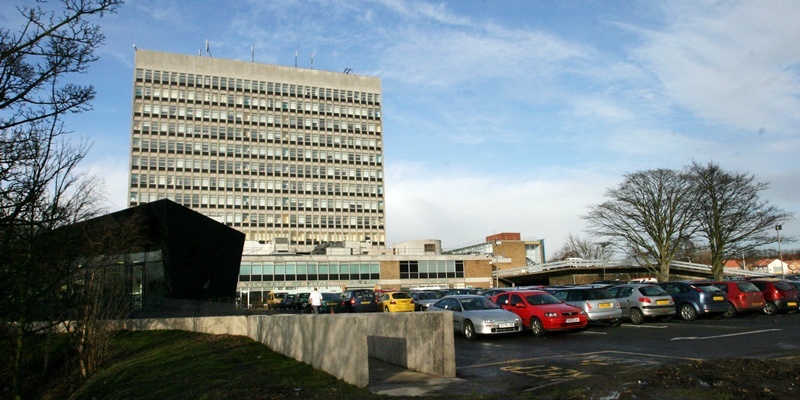A Fife hospital ward that was closed only last year was re-opened to help the health service deal with the pressures it is facing.
Strain on the system caused by the delayed discharge situation as well as other seasonal pressures such as a rise in flu cases has prompted NHS Fife to reopen ward 13 at Kirkcaldy’s Victoria Hospital less than five months after it was shut.
The move has been brought about after NHS Fife decided to transfer the day case clinical assessment unit from Dunfermline’s Queen Margaret Hospital and the similar Planned Intervention Day Unit (PIDU) at the Vic into ward 13 to open up more beds to cope with the demands on the NHS locally.
But the measure was yesterday again criticised by Councillor Andrew Rodger, who called on the health board to admit it had been a mistake to close the ward in the first place.
An NHS Fife spokeswoman confirmed the changes would allow more people to be seen at the hospital without the need for them to be admitted.
She said, “The plan to use the former ward 13 in Victoria Hospital to accommodate ambulatory care services is now in place, allowing us to treat an increased number of patients on a day case basis, thus preventing the need for patients to be admitted and adding to the pressure on beds.
“Queen Margaret Hospital is currently the acute surgical and orthopaedic trauma centre for Fife and transferring similar services from Queen Margaret Hospital to Victoria Hospital in the short term will create additional capacity at Queen Margaret Hospital for the admission of urgent surgical and orthopaedic patients.”
The spokesperson added that the service should return to Queen Margaret Hospital when the “current pressures ease.”Ward closed to ensure patient safetyWhen ward 13 closed as a general medical ward last year, managers insisted its closure was vital to ensure patient safety and the proper training of junior doctors, and maintained the decision was not financially driven.
However, health campaigner Mr Rodger claimed at the time the 30 beds in question were still very much needed and now feels his views have been vindicated.
“I told them back in June not to close the ward because they would have problems in the winter, and that’s what’s happened,” he said.
“I just find it unbelievable. That could have been 30 beds helping the situation but they decided to close it down and not have anything else in place.”
As well as the much publicised delayed discharge situation, a rise in flu cases has also impacted on Fife’s ability to cope.
GP consultation rates for flu-like illness and acute respiratory illness in Fife rose from 93 per 100,000 population in the final week of 2010 to 108.4 per 100,000 population in the first week of the new year, broadly in line with the Scottish average of 109 per 100,000 population.
This winter flu has claimed the lives of 27 people across Scotland 17 of which came in the week ending January 10.
Almost all of the deaths and the 116 intensive care cases to date since the flu season began involved swine flu (H1N1).
With that in mind, Dr Charles Saunders, NHS Fife consultant in public health medicine, again urged those at risk to get themselves immunised.
He said, “The numbers of people with flu-like illness in Fife are about average for the time of year.
“Those over 65, pregnant women and anyone over six months old in at-risk groups can still contact their GP surgery to ask about flu immunisation.”
